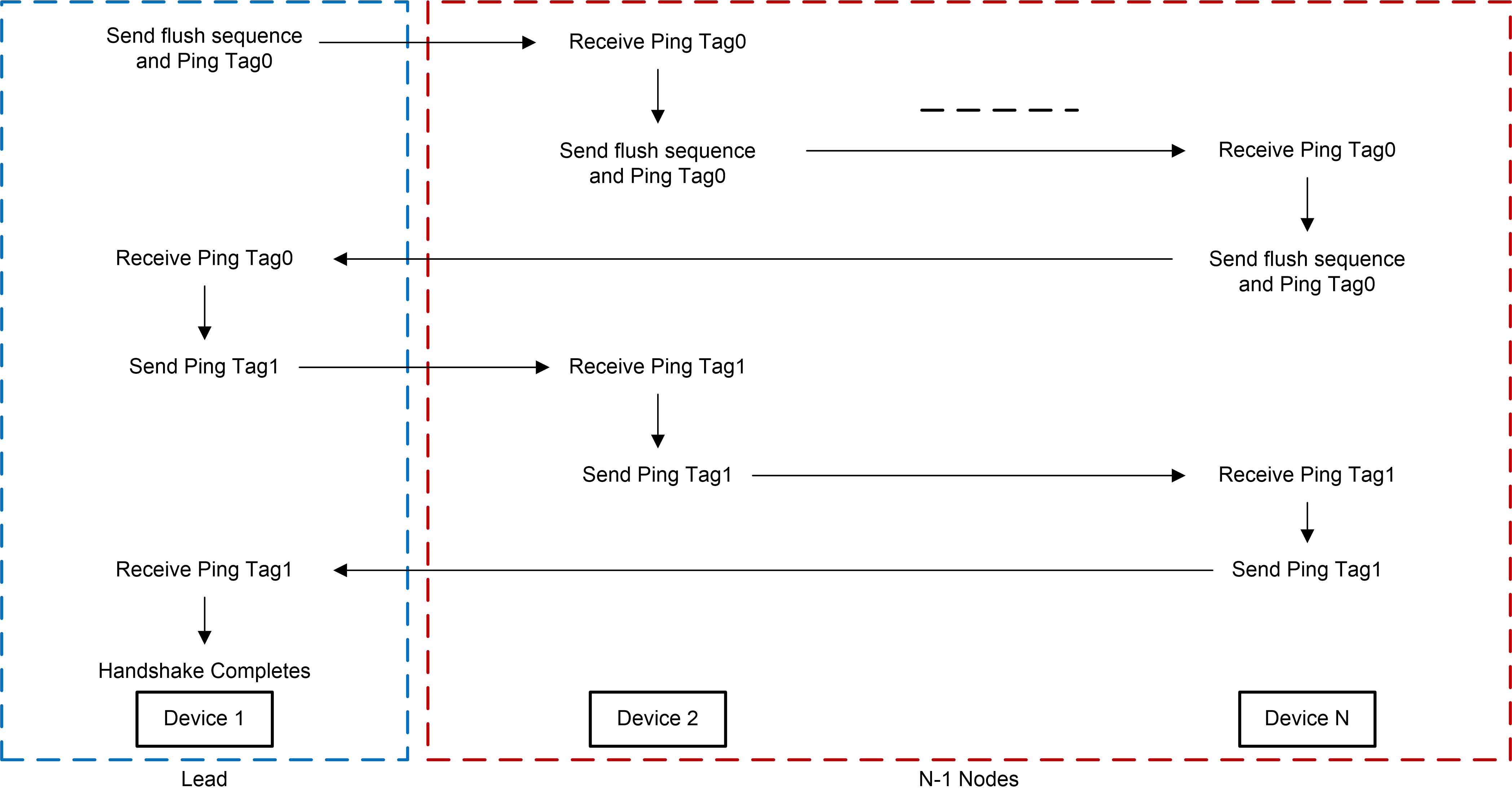SPRACM3E August 2021 – January 2023 TMS320F280021 , TMS320F280021-Q1 , TMS320F280023 , TMS320F280023-Q1 , TMS320F280023C , TMS320F280025 , TMS320F280025-Q1 , TMS320F280025C , TMS320F280025C-Q1 , TMS320F280033 , TMS320F280034 , TMS320F280034-Q1 , TMS320F280036-Q1 , TMS320F280036C-Q1 , TMS320F280037 , TMS320F280037-Q1 , TMS320F280037C , TMS320F280037C-Q1 , TMS320F280038-Q1 , TMS320F280038C-Q1 , TMS320F280039 , TMS320F280039-Q1 , TMS320F280039C , TMS320F280039C-Q1 , TMS320F280040-Q1 , TMS320F280040C-Q1 , TMS320F280041 , TMS320F280041-Q1 , TMS320F280041C , TMS320F280041C-Q1 , TMS320F280045 , TMS320F280048-Q1 , TMS320F280048C-Q1 , TMS320F280049 , TMS320F280049-Q1 , TMS320F280049C , TMS320F280049C-Q1 , TMS320F28384D , TMS320F28384S , TMS320F28386D , TMS320F28386S , TMS320F28388D , TMS320F28388S , TMS320F28P650DH , TMS320F28P650DK , TMS320F28P650SH , TMS320F28P650SK , TMS320F28P659DH-Q1 , TMS320F28P659DK-Q1 , TMS320F28P659SH-Q1
- Using the Fast Serial Interface (FSI) With Multiple Devices in an Application
- Trademarks
- 1Introduction to the FSI Module
- 2FSI Applications
- 3Handshake Mechanism
- 4Sending and Receiving FSI Data Frames
- 5Daisy-Chain Topology Tests
- 6Star Topology Tests
-
7Event Synchronization Over FSI
- 7.1 Introduction
- 7.2 C2000Ware FSI EPWM Sync Examples
- 7.3 Additional Tips and Usage of FSI Event Sync
- 8References
- 9Revision History
3.1 Daisy-Chain Handshake Mechanism
Once the FSITX and FSIRX modules of each device have been configured, the handshake mechanism should be implemented to prepare each device in the chain before actual data transmission, since devices may power up in an arbitrary order in a real scenario.
In order to simplify the data flow, one device is assigned as the lead, working as the driver of the handshake sequence, and the other N-1 devices, within the daisy-chain loop, are assigned as nodes. Following the example in Figure 2-1, Device 1 will be the lead device. It should be noted that the other N-1 node devices will share the same handshake configuration.
The handshake process can be described as follows:
- For all devices, configure the Frame Type of FSITX as Ping Frame, and enable the receiver interrupts for Ping Frame Received event on the FSI INT1 vector to detect the incoming transmission.
- Begin the ping loop 0:
- The lead device sends the flush sequence to the second device followed by a ping frame with Tag0(0000); wait for some time. If the lead device receives a valid ping frame tag Tag0, continue to the second loop; otherwise iterate the ping loop 0 again.
- The node devices enter a wait loop for a receiver interrupt. If a valid ping frame tag of Tag0 is received from the previous device, continue to the loop 1; otherwise iterate the ping loop 0 again.
- Begin the
ping loop 1:
- The lead device sends a ping frame with Tag1(0001); wait for some time. If the lead device receives a valid ping frame Tag1 the handshake sequence is complete and the application can continue; otherwise iterate the ping loop 1 again.
- The node devices send the flush sequence followed by a ping frame Tag0 and wait for a receiver interrupt. If a valid ping frame Tag1 is received send a ping frame Tag1 to signal the completion of the handshake sequence; or else iterate the ping loop 1 again.
- Handshake completed.
 Figure 3-1 Daisy-Chain Handshake
Sequence
Figure 3-1 Daisy-Chain Handshake
SequenceThe simplified data flow is shown in Figure 3-1. Two ping loops are necessary for the daisy-chain connection handshake mechanism. Ping loop 0 has the purpose of establishing the communication path along the chain of devices and ping loop 1 acts as the acknowledgment to the nodes that the communication path is good. In ping loop 0, the node devices wait to receive a Ping Tag0 from the previous device in the chain. Once a Ping Tag0 is successfully received, it will be forwarded on to the next device in the chain. The ping loop 0 will fail if a device in the chain has not powered up or is not ready for the reception. Once ping loop 0 has succeeded, in which ping tag0 has made its way back to the lead device, ping loop 1 is initiated to inform the node devices that the handshake sequence has completed and to begin expecting actual data.
The handshake function can be found in the tested projects, with handshake_lead() for the lead device and handshake_node() for the other N-1 devices in the daisy-chain loop.